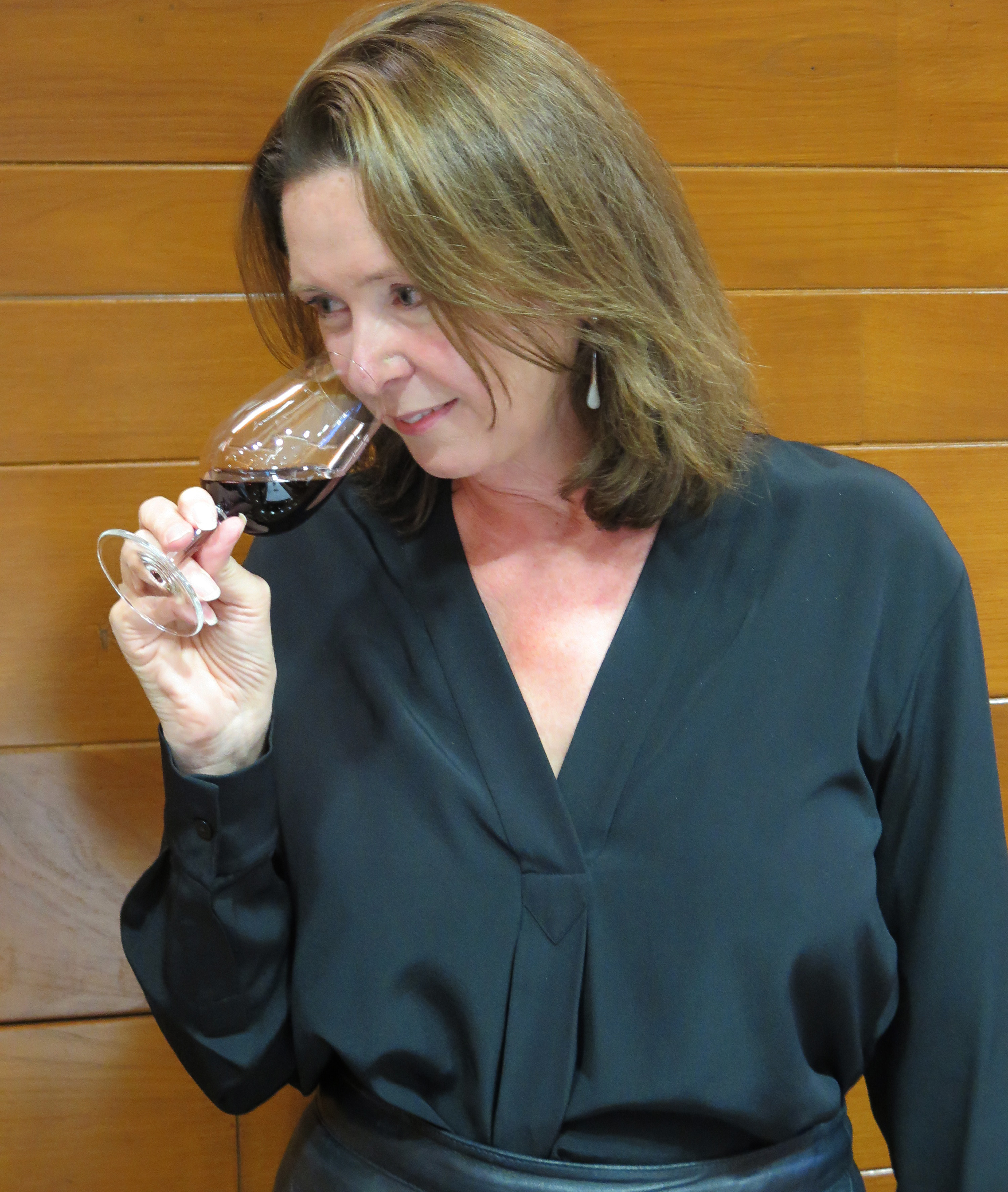 Everyone lucky enough to attend agreed! The opening event of the Club’s 2019-2020 season was a tour de force, a triumph, a fabulous tasting. Jane Anson (@newbordeaux) gave us a masterclass in the wines of Pomerol and Pauillac; seasoning great wines with profound learning, sparkling wit and deep respect for the human stories behind each of her selections.
Everyone lucky enough to attend agreed! The opening event of the Club’s 2019-2020 season was a tour de force, a triumph, a fabulous tasting. Jane Anson (@newbordeaux) gave us a masterclass in the wines of Pomerol and Pauillac; seasoning great wines with profound learning, sparkling wit and deep respect for the human stories behind each of her selections.
Jane grew up in Oxford and taught English in Japan before becoming, ‘by chance’ she modestly said, the Decanter correspondent in Bordeaux. She has made the position her own; chairing the Decanter ‘En Primeur’ tastings and writing extensively on Bordeaux (and other topics). Her 2013 Wine Legends: the 1855 First Growth Wines was the first ever comprehensive history of all the five first growths and her new book Inside Bordeaux will undoubtedly be one of the wine publishing world’s major events when it comes out in March 2020.
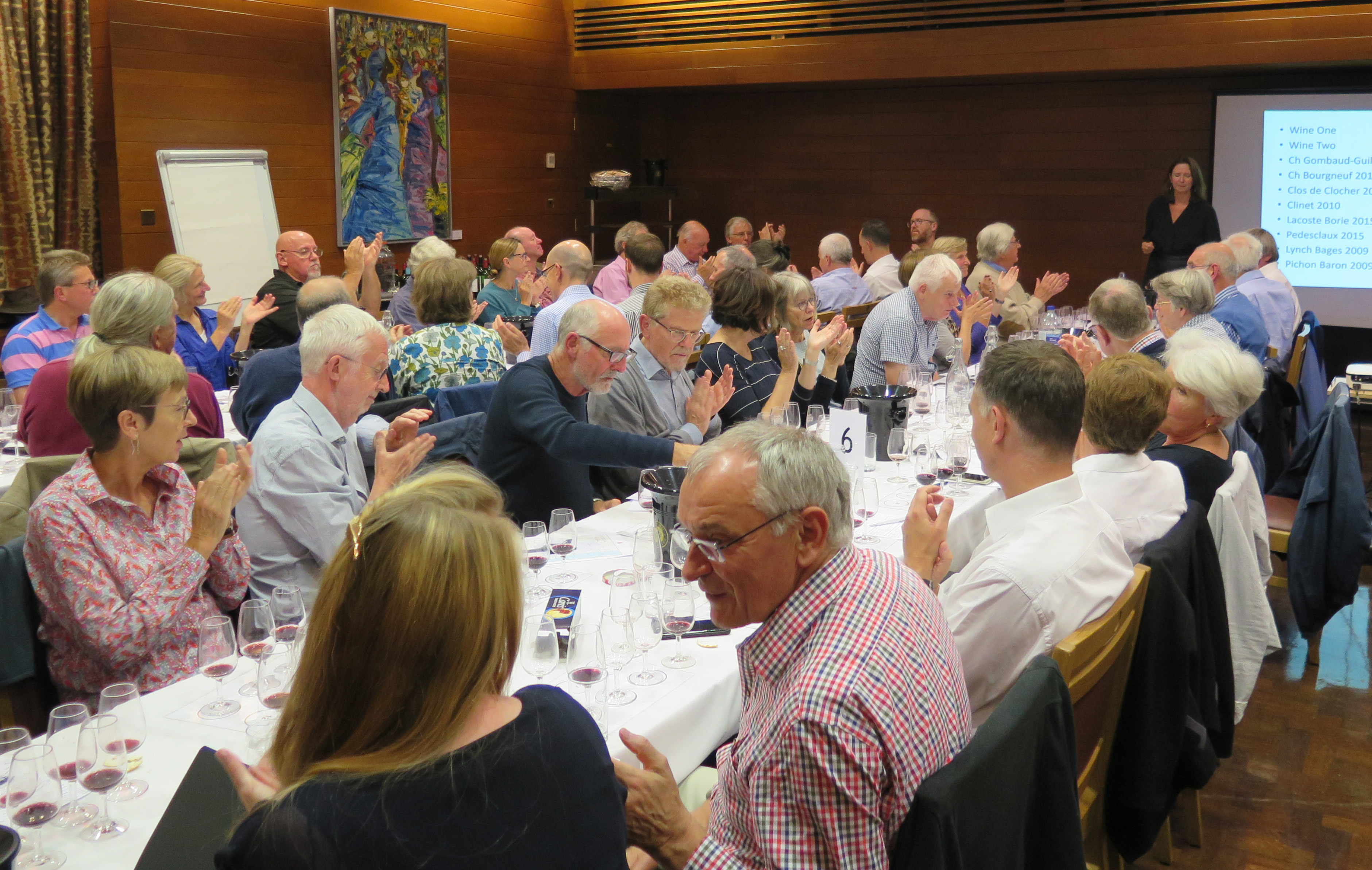 The tasting at Wolfson College on 18 September drew on both the extensive research undertaken for her book and her personal contacts with many of the winemakers and estate owners in these two regions. Without her support in sourcing wines the tasting would have been impossible and we thank her.
The tasting at Wolfson College on 18 September drew on both the extensive research undertaken for her book and her personal contacts with many of the winemakers and estate owners in these two regions. Without her support in sourcing wines the tasting would have been impossible and we thank her.
Firstly, Jane profiled the two areas, which are usually seen as opposites but in fact have much in common.
Pomerol is a Right Bank region of just under 800 ha. Properties are small, averaging under 6 ha in size and there is almost no possibility for expansion of the vineyard area (unlike areas such as Pessac-Leognan which added 150-200 ha of vines in 2019). The properties are mostly still family-owned and worked although the Moueix family (owners of Petrus) own or distribute at least 30% of the total production of the region. Most of the 150 or so properties make their own wine (very few ‘consultants’ here) and all but Château Clinet make a first wine only. There’s no classification within the Pomerol area. As Jane put it, wines are ‘either Pomerol or not’. And there’s no chance that it will be classified in the future. The local owners have seen the problems that the re-classification of St Emilion every ten years causes as wines chase fashion rather than remain true to their traditions and terroir. Though it has been a commercial centre for centuries it was not until the 19th century that Pomerol wines began to have any presence on international markets. Even today most of the chateaux have a brand presence in only a dozen or so countries – unlike the global reach and brand reputation of the big Pauillac growths. Pomerol is known for clay soil and Merlot-dominated wines, though as we came to understand through the tasting the reality is rather more complex.
Pauillac is 50% larger (though it is still only 1% of the total Bordeaux appellation) and the estates are considerably larger, averaging around 22 ha but including large properties such as Lafite Rothschild at 120 ha. Unlike Pomerol the area is dominated by wealthy absentee owners of whom less than 20% control 90% of the production. Also unlike Pomerol, most of the estates make a second wine, many a third wine, and the second wines – particularly in good years – represent a means of drinking great wine at less than a king’s ransom. The ‘trick’ of Pauillac, said Jane, is that they make a lot of wine of ‘incredible quality’ – and you don’t have to wait ten years for the second wines to be ready to drink. Pauillac has been a major wine-growing area for centuries but the two major periods of expansion were in the 18th century after the Dutch drained the land and again in the 19th century when there was a ‘gold rush’ of international money. New plantings on virgin land were embellished with opulent chateaux and though the post-1929 depression hurt Pauillac land values badly it survived to thrive in the post-war period. Whereas Pomerol is Merlot country (the area average is around 85% Merlot with plentiful Cabernet Franc), the dominant grape on Pauillac’s gravelly soils is Cabernet Sauvignon.
But these differences go only so far. In both areas, major players (Moueix in Pomerol, the first growths in Pauillac) have provided the engine to improve quality. Land values – in the Bordeaux context – are not that dissimilar. A hectare in Pauillac or Pomerol will set you back €2m per ha (2018 price) – whilst in the sweet wine areas such as Loupiac or in the Côtes you can set yourself up for under €20,000 a hectare. It is the land value that drives the price per bottle so high – that and the shared determination to do everything perfectly, from vine management to bottles and corks. Finally, both areas have more complex terroirs than is often assumed. It is not simply clay in Pomerol and gravel in Pauillac but a mix of gravel and clay in both areas.
We started the tasting of ten wines (five from each region) by blind tasting a Pomerol (Château Séraphine 2017) and a Pauillac (Château Haut Bages Monpelou 2015). Jane’s initial briefing made it clear that the warmer Pomerol climate and the predominance of Merlot in the blend tends to produce lusher, silkier tannins, usually around 1% higher alcohol, slightly lower acidity and beefier aromas (with violets less common than legend has it), whilst Pauillac’s cooler conditions and Cab Sauv dominance lead to more structured tannins and elegant power. Could we spot the Pomerol? Well no, we couldn’t. Only about half of us made the right call.
The Haut Bages Monpelou was a Cru Bourgeois wine that was once part of the 4th growth Duhart Milon. 2015 was a good vintage and though this wine was still maturing in Jane’s judgement there was plenty of evidence of greater things to come. Dark in colour, slightly smoky blackcurrant on the nose and powerful tannins, this wine was 70% Cab Sauv (compared to the appellation average of 63%) and had been matured in 30% new oak. The Ch Séraphine is a rarity – a new kid on the Pomerol block. 2017 was a tricky vintage with frost affecting the yield. We were tasting four bottles of the 1000 produced in the first ever vintage! Currently this is 100% Merlot but the blend will change as new Cab Franc vines add their contribution to the wine. This was a brighter, richer, spicier wine made by the owner’s daughter, a Plumpton graduate who has also worked in New Zealand.
Then we hit the meat of the tasting, getting ‘into conversation’ with four Pomerols and four Pauillacs with an average price of over £80.
An essay could be written on each of the listed wines but I will resist in the hope of picking out a few themes.
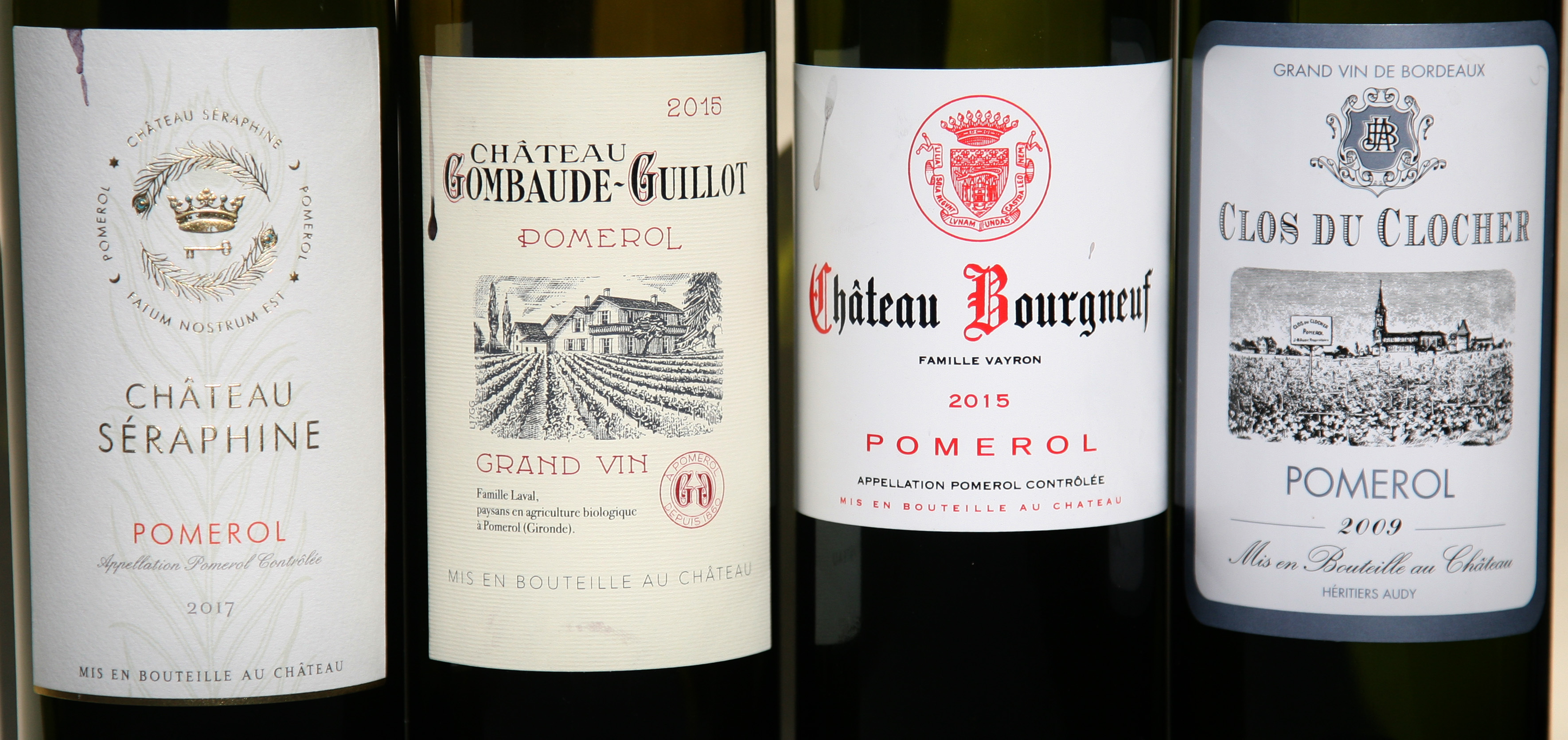
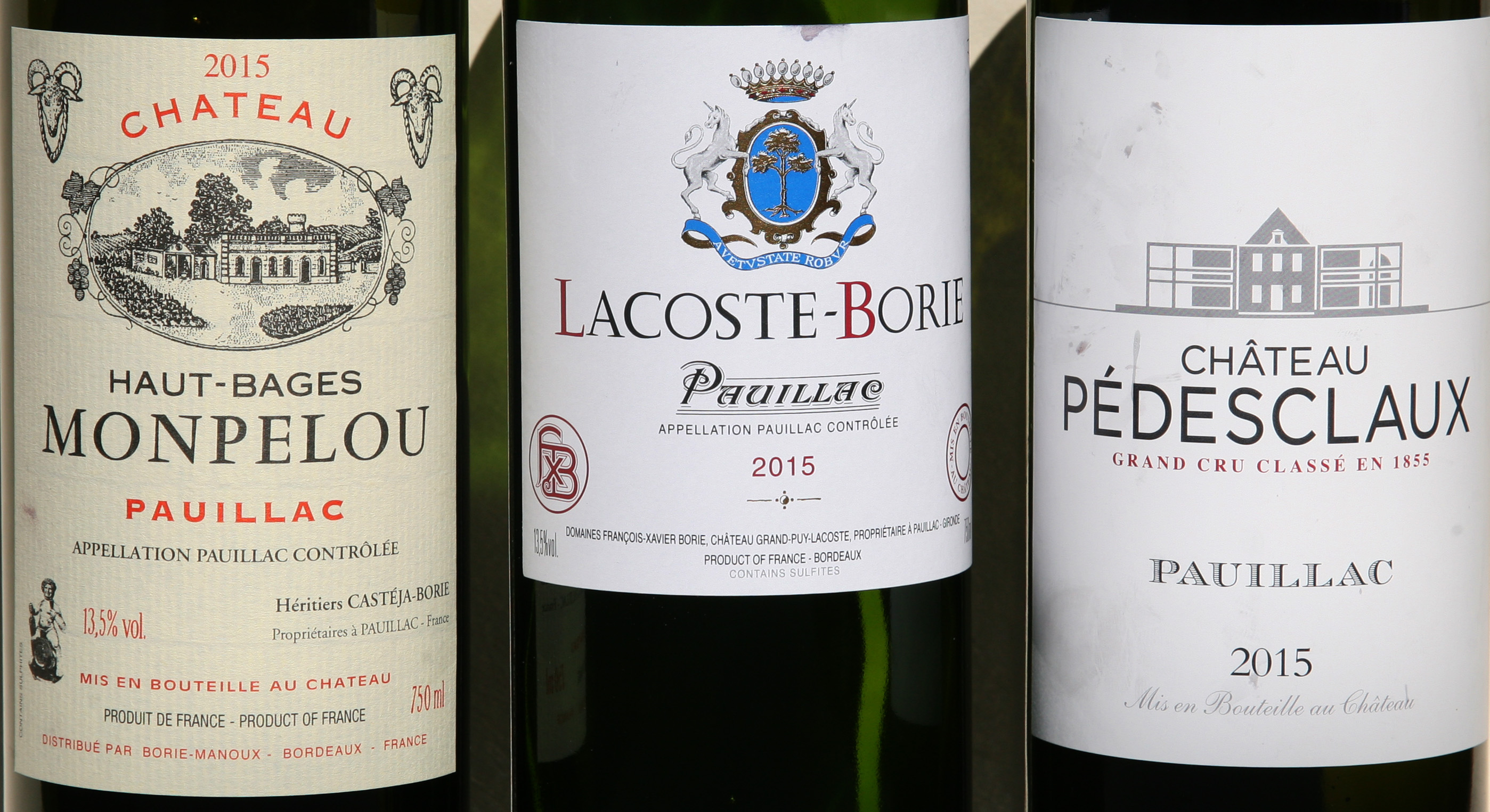
Firstly, though the Pomerols did have slightly higher alcohol (typically 14-14.5%) than the Pauillacs at 13.5% this had little impact on overall sense of power and richness in the wines. Tannin structures and – to an extent – flavour and aroma were better predictors of origin.
Second, the importance of the blend. What Jane first pointed to as we went through the Pomerol wines was the impact of Cabernet Franc in adding more floral aromatics and boosting acidity (particularly noticeable in the Clos de Clocher 2009). Though both regions are deeply wedded to tradition, there’s a movement in Pomerol in particular to bring in (or bring back) other varieties in the blends. Thus Malbec is making a comeback in Pomerol. There’s lobbying too for Petit Verdot in Pomerol to add acidity and spice – partly in response to the threat of global warming. Alcohol levels are rising and replacing Merlot with Malbec and PV helps combat this, as do changes in rootstocks and trellising systems.
A third issue we discussed was the value and effect of going biodynamic. The Gombaud-Guillot is a Pomerol frontrunner in this movement but around 10% of Bordeaux has converted or is in the process of doing so. Remarkably, the seventh-generation owners of this property have pulled 20 rows of vines to plant trees to improve biodiversity. If you’re going to go biodynamic then, as the Gombaud-Guillot example suggests, you have to do so wholeheartedly. It’s not just cow horns and camomile tea but a constant care in the vineyard. In Jane’s view these wines – particularly from established biodynamic producers – have a mouth-watering freshness which is balanced and more natural than what she called the ‘over-polished and over-finished wines’ that have been fashionable in Bordeaux in recent years (thanks to Mr Parker).
Fourthly we talked value for money. When prices start around £40 and go a long way up, can there be such a concept? And if so, what should we be looking for? A key point to consider in Jane’s opinion is the importance of taste from the very beginning. Wines that taste bitter or drying in youth are not going to come round. Most of these wines are built to age thirty years or more and trusting your tastebuds and buying young (or buying a second wine from a top estate in a good year) are the best ways of finding wines you’ll appreciate more and more as they mature and open up. One of the 2015 wines we tasted was under £20 as part of a Club offer a few years ago; now it’s over £40.
And, lastly, what should we be looking for in the wines of Pomerol and Pauillac? Everybody will have (and did have) their own favourites from this fascinating tasting. But are there common factors to look for? For Jane, the key is power and density. Not necessarily or even preferably the power of alcohol but the silkier and more elegant power of fruit and structure. Density is a harder concept to define but depth of colour, depth of fruit and range of flavour that uncovers itself with time are important. For the record, Jane’s go-to wine – given no budget constraints – would be Lafite 1959. Perhaps not everyday value at £3-4,000 a bottle but we can dream…
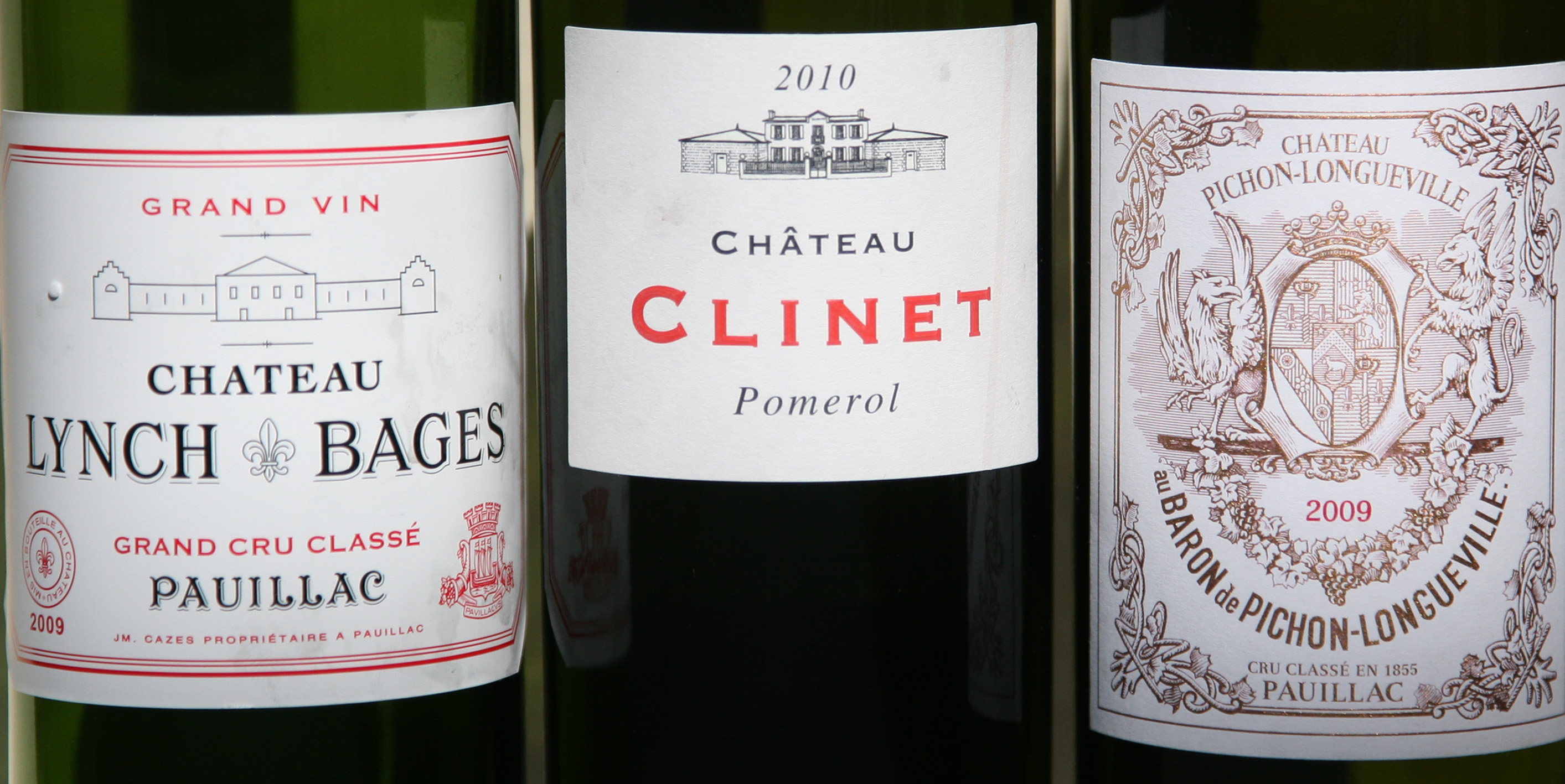 To pick a favourite from this superb tasting is both difficult and potentially invidious but, talking to members around the room later in the evening, there were plenty of votes for Château Lynch Bages 2009 made by the Cazes family in Pauillac. This was Jane’s pick of the night as well – but there were plenty of other contenders.
To pick a favourite from this superb tasting is both difficult and potentially invidious but, talking to members around the room later in the evening, there were plenty of votes for Château Lynch Bages 2009 made by the Cazes family in Pauillac. This was Jane’s pick of the night as well – but there were plenty of other contenders.
So, peruse the Club offers that Simon Blower will be masterminding this autumn, read Jane’s book when it comes out, buy early and force yourself to be patient. Good things will come.
And thank your lucky stars that Jane was prepared to do this tasting for us!
The wines
- Château Haut Bages Monpelou 2015, 13.5% abv. (ave. price ca. £42)
- Château Séraphine 2017, 13% abv. (ave. price ca. £80)
- Château Gombaud-Guillot, Pomerol, 2015, 14% abv. (ave. price: £79.50*)
- Château Bourgneuf, Pomerol, 2015, 14.5% abv. (ave. price: £40.00)
- Clos de Clocher, Pomerol, 2009, 14.5% abv. (ave. price: £52.00)
- Château Clinet, Pomerol, 2010, 14% abv. (ave. price: £121.50)
- Ch Grand Puy Lacoste “Lacoste Borie”, Pauillac, 2015, 13.5% abv. (ave. price: £26.50)
- Château Pédesclaux, Pauillac, 2015, 13.5% abv. (ave. price: £43.50)
- Château Lynch Bages, Pauillac, 2009 (5ème Cru Classé), 13.5% abv. (ave. price: £146.50)
- Ch Pichon-Longueville Baron, Pauillac, 2009 (2ème Cru), 13.5% abv. (ave. price: £164.50)
Prices from wines-earcher.com 11/9/19; for wines located in UK or * all countries